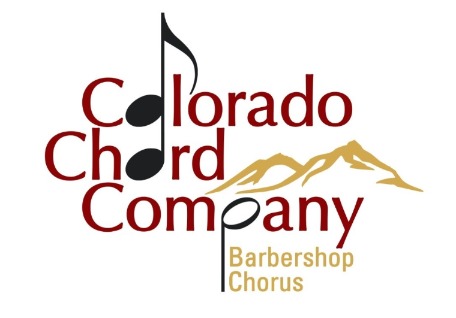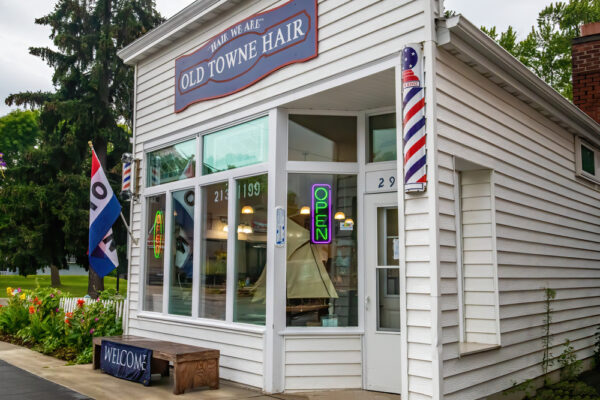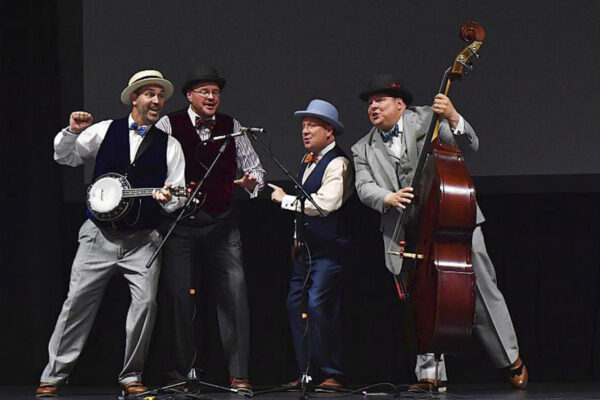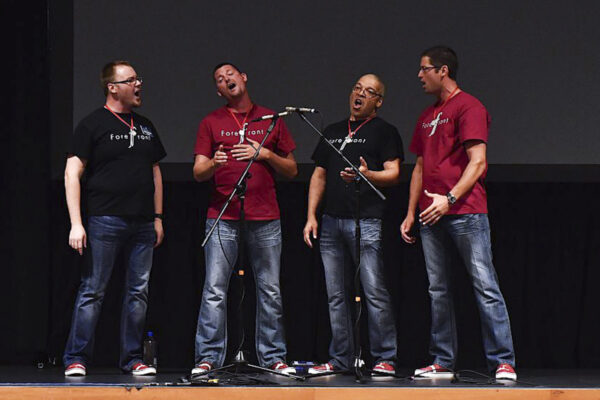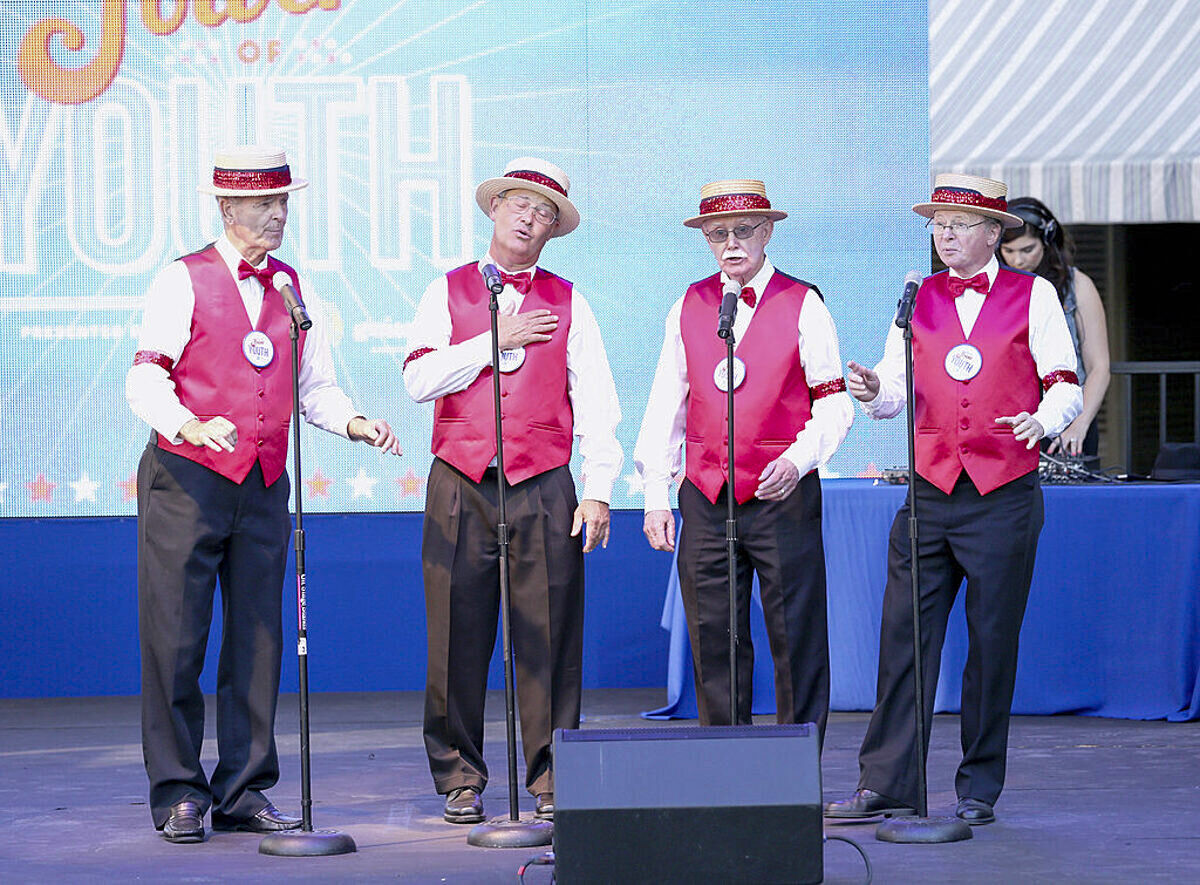
The Not-So-Dying Art of the Barbershop Quartet
One of the great apple-pie traditions of American music, right up there with a marching band or Dixieland band, is the good old barbershop quartet. My mind goes right to those white gazebos in parks and town squares and those beribboned straw hats, big mustaches, and striped jackets that barbershop quartets typically sport.
While thinking about the famous Buffalo Bills, the quartet who sang “Lida Rose” in “The Music Man” movie (the subject of my last Epoch Times article), I began to wonder whether barbershop quartets still exist in America, or if it’s a dead or dying art form?
It would be well to note first that old-fashioned men’s barbershops themselves appear to be a dying breed, most having been usurped by large, mall-based, unisex hair salons. According to the U.S. Bureau of Labor Statistics, there were only 9,400 traditional men’s barbershops left in the United States in 2020, down from 33,000 in 1972, when they began keeping records on it.
It can be safely speculated, then, that many young men today have probably never been to, or perhaps even seen, an old-style barbershop. So, any musical ensemble named after one would seem to be archaic, by definition. What does the barbershop’s musical namesake have to do with getting one’s hair cut, anyway?
To put the answer into context, we must remember that recorded music and passive listening to music are relatively recent phenomena. People used to have to make their own music; and well into the 20th century, ordinary folks could be quite uninhibited about bursting into song as a regular part of everyday life.
They sang robustly at church and around the piano at home, or on the front porch in the evening. Street vendors hawked their wares with a bit of a tune as their jingle. At work or social gatherings, a good job or a promotion might be rewarded with a lusty refrain of “For He’s a Jolly Good Fellow.” Soldiers often marched to a sung cadence, as did miners trudging into the mines and home again. (“Hi ho, hi ho, it’s off to work we go.”)
Barbershop Origins
In 17th-century England, barbershops, as a de facto gathering place for the common man, typically had a stringed instrument similar to a lute available for use by the men waiting for their haircuts. To pass the time, anyone could use it to accompany some impromptu recreational singing by the group.
By the early 19th century in America, with no radio or television to fill the silence of the shop, it became common for the barber himself to belt out a popular tune. Then the men waiting for their turn in the chair—often total strangers to each other—would freely chime in with him. It is something we can hardly imagine happening today, outside of a movie musical. What’s more, the men could improvise harmony!
The style of harmony and rhythm that became common for such singing owes a lot to the parallel tradition of male harmony singing in the African American community. There was often the same African American intersection of European harmony with African rhythms and scalar inflections that produced jazz. This increasingly lent a ragtime influence to the sound of the emerging white barbershop quartets.
As with any grassroots art form, certain norms gradually codified. The ensemble shaped up into a standard four-part group—from the top down, a high tenor on harmony, then a second tenor (called “lead”) just below it on the main melody, then baritone and bass voices below that.
The characteristic harmony of the style (for those who know the terms) features a chain of dominant seventh chords generally moving in descending fifths around the circle of fifths. Distinct from modern-day a cappella or pop vocal groups, the traditional barbershop quartet had no “beat boxes,” countermelodies, or accompaniment parts. Its members sang unified as one voice, all with the same rhythm and words together, only on different pitches, creating a new chord for every word.
One thing that codified the barbershop quartet as a classic American ensemble was Vaudeville, where quartets were hired to entertain the crowds between the main acts. They would stand in front of the closed curtain while the next act was being set up behind the curtain. It was then that their typically stylish costume with the straw hats became standard.
A Still-Thriving American Tradition
In 1938, a society for barbershop quartet singing emerged out of an informal gathering on April 11, 1938, in Tulsa, Oklahoma. An enthusiast named Owen Clifton Cash invited 14 male friends to get together for a fun singalong party, and 26 showed up! They sang gleefully through the night, both as a full group and divided into several quartets, on the rooftop garden of the now-historic Tulsa Club Building.
They decided to start meeting regularly as a singing society, and so they did, eventually becoming what is now known informally as the Barbershop Harmony Society (BHS), and officially as the Society for the Preservation and Encouragement of Barber Shop Quartet Singing in America (SPEBSQSA).
Today, that organization has 17 regional districts in the Unites States, with 700 local chapters that meet weekly. The United States has 22,000 members, and international chapters have 80,000 members worldwide. In the United States, they participate jointly in local, regional, and national conventions and competitions.
Among several other such organizations are the Society for the Preservation and Propagation of Barbershop Quartet Singing in the United States (SPPBSQSUS); Friends in Harmony, based in San Antonio, Texas; and women’s barbershop organizations like the Sweet Adelines International, also formed in Tulsa and boasting 21,000 members worldwide, and Harmony Incorporated, founded in Rhode Island.
Perhaps thanks to lack of media exposure, many of us have not been aware of how thriving this genre remains. Discovering it has felt, for me, like coming across one of the best kept secrets of musical Americana, rich in cultural heritage, vibrantly still alive, and deserving of perpetuation.
My final question was “What has kept this tradition so active and enduring?” I sought out and asked a regular member of the Barbershop Harmony Society in my city whether his motivation for belonging was primarily preservational and historic, or what. His answer was simple: “What motivates me to show up at all the meetings and sing my heart out is that it is just really fun!”

Michael Kurek
American composer Michael Kurek is the composer of the Billboard No. 1 classical album “The Sea Knows.” The winner of numerous composition awards, including the prestigious Academy Award in Music from the American Academy of Arts and Letters, he has served on the Nominations Committee of the Recording Academy for the classical Grammy Awards. He is a professor emeritus of composition at Vanderbilt University. For more information and music, visit MichaelKurek.com
Full article by Michael Kurek of the Epoch Times:
